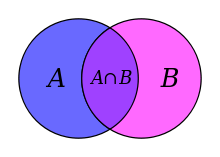Recursive set
In computability theory, a set of natural numbers is called recursive, computable or decidable if there is an algorithm which terminates after a finite amount of time and correctly decides whether a given number belongs to the set.
A more general class of sets consists of the recursively enumerable sets, also called semidecidable sets. For these sets, it is only required that there is an algorithm that correctly decides when a number is in the set; the algorithm may give no answer (but not the wrong answer) for numbers not in the set.
A set which is not computable is called noncomputable or undecidable.
Formal definition
A subset S of the natural numbers is called recursive if there exists a total computable function f such that f(x) = 1 if x ∈ S and f(x) = 0 if x ∉ S . In other words, the set S is recursive if and only if the indicator function 1S is computable.
Examples
- Every finite or cofinite subset of the natural numbers is computable. This includes these special cases:
- The empty set is computable.
- The entire set of natural numbers is computable.
- Each natural number (as defined in standard set theory) is computable; that is, the set of natural numbers less than a given natural number is computable.
- The set of prime numbers is computable.
- A recursive language is a recursive subset of a formal language.
- The set of Gödel numbers of arithmetic proofs described in Kurt Gödel's paper "On formally undecidable propositions of Principia Mathematica and related systems I"; see Gödel's incompleteness theorems.
Properties
If A is a recursive set then the complement of A is a recursive set. If A and B are recursive sets then A ∩ B, A ∪ B and the image of A × B under the Cantor pairing function are recursive sets.
A set A is a recursive set if and only if A and the complement of A are both recursively enumerable sets. The preimage of a recursive set under a total computable function is a recursive set. The image of a computable set under a total computable bijection is computable.
A set is recursive if and only if it is at level Δ0
1 of the arithmetical hierarchy.
A set is recursive if and only if it is either the range of a nondecreasing total computable function or the empty set. The image of a computable set under a nondecreasing total computable function is computable.
References
- Cutland, N. Computability. Cambridge University Press, Cambridge-New York, 1980. ISBN 0-521-22384-9; ISBN 0-521-29465-7
- Rogers, H. The Theory of Recursive Functions and Effective Computability, MIT Press. ISBN 0-262-68052-1; ISBN 0-07-053522-1
- Soare, R. Recursively enumerable sets and degrees. Perspectives in Mathematical Logic. Springer-Verlag, Berlin, 1987. ISBN 3-540-15299-7
External links
- Sakharov, Alex. "Recursive Set". MathWorld.
